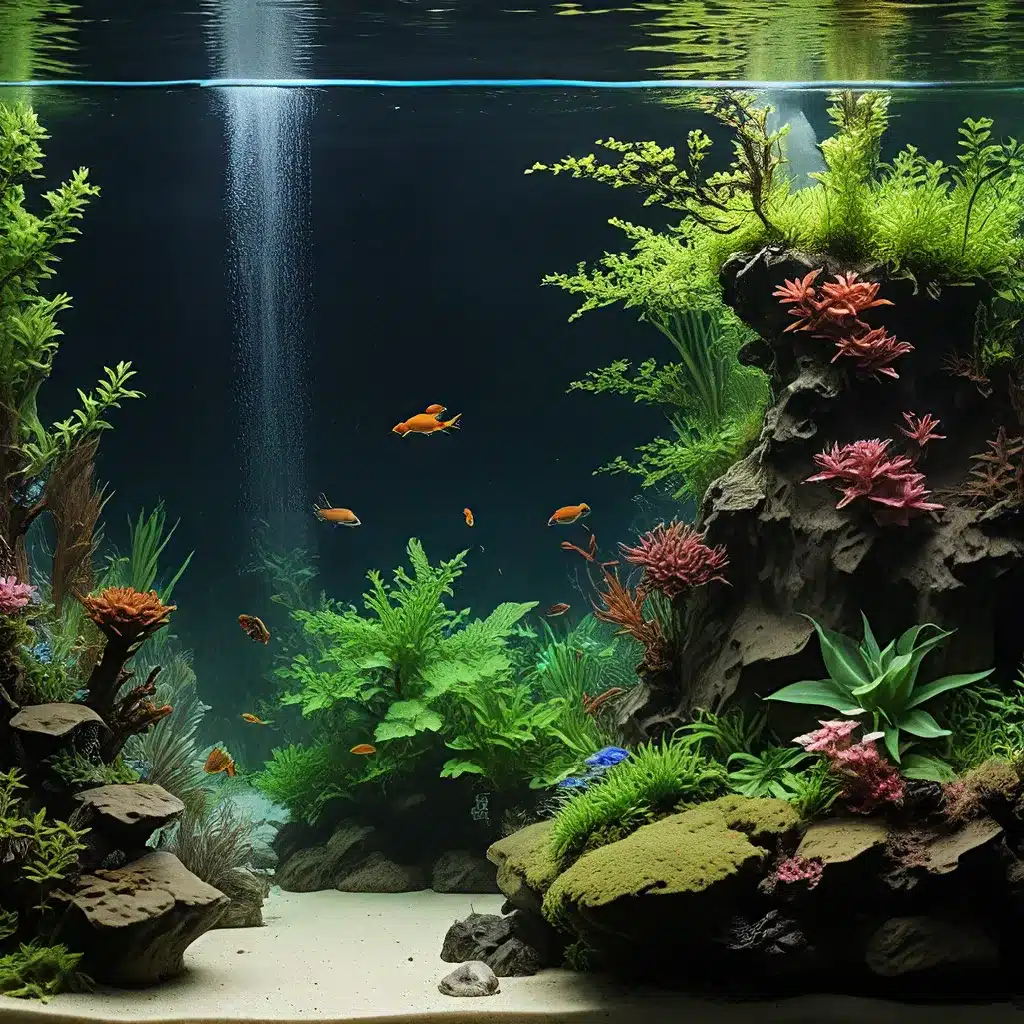
Exploring the Captivating Worlds of Nature Aquariums
Aquascaping, the art of designing and maintaining planted aquariums, has captivated hobbyists and enthusiasts worldwide. At the forefront of this aquatic artistry is the Nature Aquarium style, a mesmerizing approach that transforms ordinary tanks into breathtaking underwater landscapes. Through meticulous planning, thoughtful plant selection, and a keen eye for design, aquascapers can create immersive, naturalistic scenes that transport viewers to tranquil environments.
The Nature Aquarium style, pioneered by the renowned Japanese aquarist Takashi Amano, is characterized by its attention to detail, harmonious balance, and the seamless integration of hardscape elements like rocks and driftwood with vibrant aquatic plants. This style aims to replicate the beauty and serenity of natural ecosystems, from lush rainforests to serene mountain streams. By carefully arranging these elements, aquascapers can craft visually stunning compositions that evoke a sense of depth, perspective, and immersion.
One of the hallmarks of the Nature Aquarium approach is the emphasis on creating depth and layering. Aquascapers strategically position larger hardscape pieces in the background, gradually decreasing the size and height of plants towards the front. This creates an illusion of depth, making the aquarium appear larger and more expansive than it truly is. Skillful use of perspective and focal points further enhance this effect, guiding the viewer’s eye through the underwater scene.
Mastering the Fundamentals of Aquascaping
Achieving a successful Nature Aquarium requires a deep understanding of various aquascaping principles and techniques. Focal points, for instance, are essential in drawing the viewer’s attention and creating a sense of cohesion within the layout. Aquascapers often use striking hardscape elements, such as unique rock formations or intricate driftwood arrangements, to serve as focal points, anchoring the overall design.
Layering is another crucial aspect of Nature Aquarium design. By incorporating multiple layers of plants, hardscape materials, and even shadows, aquascapers can create a sense of depth and complexity that captivates the viewer. Skillful layering not only enhances the visual appeal but also mimics the natural stratification found in aquatic ecosystems.
Equally important is the concept of space management. Experienced aquascapers recognize the value of purposefully leaving open areas within the layout, strategically placing elements to create a sense of balance and flow. This thoughtful use of negative space prevents the aquarium from appearing cluttered or overcrowded, allowing the individual components to shine.
Exploring Diverse Aquascaping Styles
While the Nature Aquarium style has become the dominant force in modern aquascaping, there are other unique approaches that have captured the imagination of enthusiasts. The Iwagumi style, for instance, places a strong emphasis on the use of rocks, often utilizing a specific arrangement of three primary stones to create a harmonious and minimalist layout. This Japanese-inspired style challenges aquascapers to find balance and unity through simplicity, prioritizing the placement and integration of the hardscape elements.
In contrast, the Dutch Aquarium style represents a more traditional approach, focusing primarily on the arrangement and cultivation of aquatic plants. This style, which gained popularity in the Netherlands during the 1930s, is characterized by its high-density, richly-textured plant compositions, often arranged in terraced formations to create the illusion of depth. Aquascapers working in the Dutch style must possess extensive knowledge of plant care and pairing to ensure a visually stunning and harmonious underwater garden.
Regardless of the chosen style, successful aquascaping requires a deep understanding of water chemistry, plant biology, and the unique behavioral traits of the aquatic inhabitants. By mastering these fundamental aspects of aquarium care, aquascapers can create thriving, low-maintenance ecosystems that not only captivate the eye but also promote the health and well-being of their aquatic inhabitants.
Sustainable Aquascaping Practices
As the popularity of aquascaping continues to grow, there is an increasing emphasis on adopting sustainable practices that minimize the environmental impact of our aquarium hobbies. This includes the responsible sourcing of materials, the selection of hardy, low-maintenance plant species, and the implementation of efficient filtration and water management systems.
By embracing sustainable aquascaping techniques, hobbyists can ensure the long-term viability of their aquatic environments, reducing the need for frequent water changes, chemical treatments, and costly replacements. This not only benefits the health and stability of the aquarium itself but also aligns with the broader goals of environmental stewardship and resource conservation.
Conclusion: Unleashing Your Aquatic Artistry
Aquascaping is a captivating hobby that allows enthusiasts to unleash their creativity and transform ordinary aquariums into mesmerizing underwater landscapes. Whether you’re drawn to the serene beauty of Nature Aquariums, the minimalist elegance of Iwagumi layouts, or the lush abundance of Dutch-style plantings, the art of aquascaping offers endless opportunities for self-expression and the creation of truly stunning aquatic environments.
By mastering the fundamental principles of aquascaping, incorporating sustainable practices, and staying abreast of the latest techniques and trends, aquarists can elevate their hobby to new heights, crafting aquatic masterpieces that inspire wonder and appreciation in all who behold them. So dive into the world of aquascaping, and let your aquatic artistry shine through!

